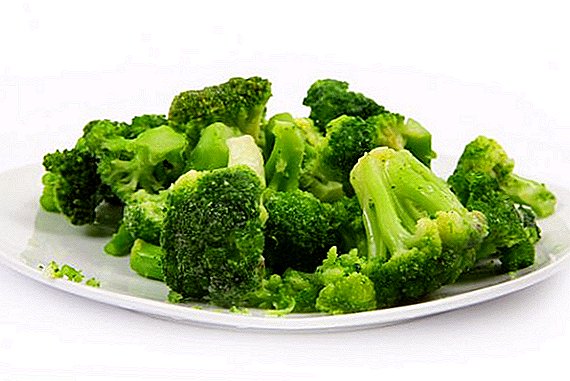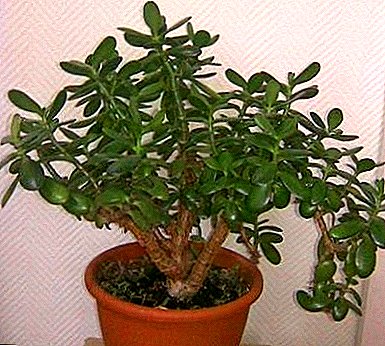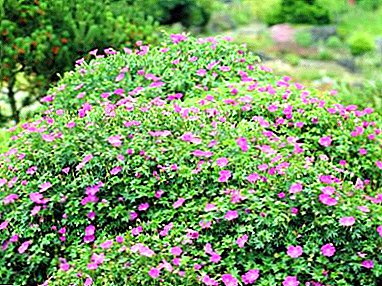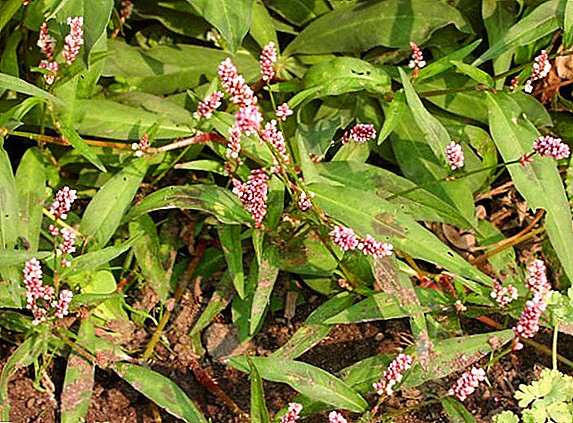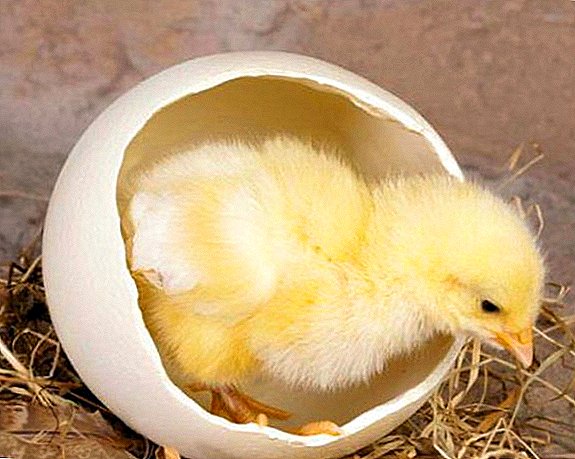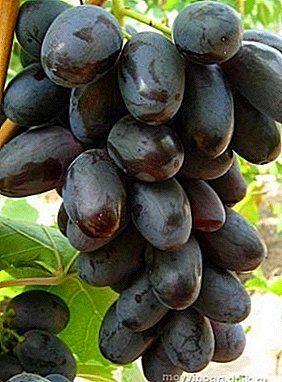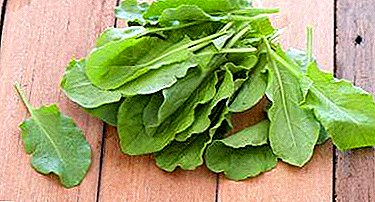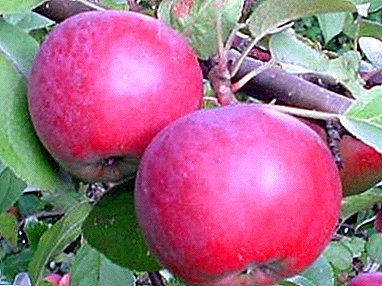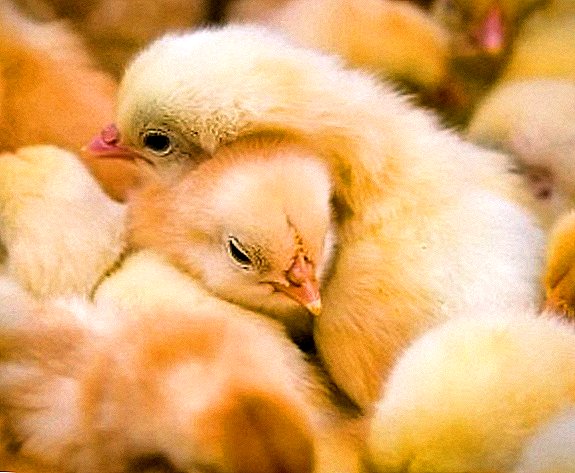 Small chickens are prone to many diseases that often cause death in the first week of their lives. Of course, it is difficult for a novice poultry farmer to remember all the varieties of possible ailments, but the most common ones are worth knowing. In this article, we will pay attention to such a well-known problem as pullorosis, and tell you about its symptoms, diagnosis and treatment.
Small chickens are prone to many diseases that often cause death in the first week of their lives. Of course, it is difficult for a novice poultry farmer to remember all the varieties of possible ailments, but the most common ones are worth knowing. In this article, we will pay attention to such a well-known problem as pullorosis, and tell you about its symptoms, diagnosis and treatment.
What is this disease
The term pullorosis (Pullorosis) is commonly understood as an infectious disease of chickens that affects the intestines, parenchymal organs, and also contributes to the degeneration of ovarian follicles in adults.
Did you know? For the first time, a massive defeat by an ailment was described in 1889 in England, but then it had a different name - "bird salmonellosis".
In Europe, the disease is more often diagnosed in adult birds, but in the United States, recently hatchlings suffered from it. For a long time, such features of the course of pullorosis were perceived by the poultry farmers as two separate problems with their names: "chicken fever" and "white chicken diarrhea."
This division has long been encountered even in authoritative sources, but later scientists were able to prove the presence of a common pathogen. Today, this disease is fixed in almost every part of the globe, but more often it affects the chickens. 
Pathogen and pathogenesis
The causative agent of this disease is Salmonella pullorum gallinosum - "g-shaped", fixed stick with rounded ends.
We advise you to read about what to do if chickens die, why chicks have wings down, why chickens peck at each other, what to do if chicks have legs and if they do not grow.
The transmission of the disease occurs from a sick bird to a healthy one in the following ways:
- through the feces (the pathogen retains its vital activity for 100 days);
- the soil in the chicken coop (Salmonella pullorum gallinosum can stay for 400 days);
- with direct contact between birds.
Once in the bird's body, the pathogen activates the production of exotoxins, which lead to direct intoxication of both embryos and chicks that have already appeared. The features of the lesion in each case may differ, because a lot depends on the age of chickens and the complexity of the course of the disease.  So, with the death of two-or three-day chickens, it is not possible to determine the presence of the pathogen in the tissues, because the course of pullorosis was too rapid. At a later age, chronic forms usually lead to pathological changes in the tissues of the internal organs, which is explained by slow intoxication.
So, with the death of two-or three-day chickens, it is not possible to determine the presence of the pathogen in the tissues, because the course of pullorosis was too rapid. At a later age, chronic forms usually lead to pathological changes in the tissues of the internal organs, which is explained by slow intoxication.
Internal changes often affect the intestines (there may be both inflammation and hemorrhage), spleen and liver, and the latter even changes color, becoming clay-yellow.
Check out the symptoms and methods of treating chickens' diseases.
In the study of the kidneys and ureters of dead chickens, salt accumulation can be found, and lameness are additionally diagnosed in meat breeds and broiler hybrids. Studying the symptoms of the disease helps to determine which form it belongs to, which greatly simplifies the task of treating it. Consider the possible varieties more closely. 
Forms and symptoms of pullorosis
There are three forms of pullorosis, each of which is characterized by its specific features.
Fulminant
The rapid development of the disease does not always lead to death, but even the recovered chickens for a long time will lag behind their fellow tribesmen in growth.
The main signs of illness in this case are:
- rapidly developing weakness;
- violation of coordinated movements of chickens;
- widely spaced paws and drooping eyelids;
- breathing through the open beak;
- lack of appetite;
- problems with digestion and the appearance of bacterial secretions of the mucous consistency (usually glue down fluff and clog the cloaca).
 Of course, at the very first symptoms, the diseased individuals are isolated from the rest of the population and begin treatment.
Of course, at the very first symptoms, the diseased individuals are isolated from the rest of the population and begin treatment.Permanent
This type of pullorosis usually affects young animals after two weeks of life.
Read more about what broiler chickens look like, how to feed them properly, why broiler chickens die, what should be included in a broiler chickens first aid kit, how to treat non-infectious and infectious diseases of broilers.
The characteristic symptoms of the disease in this case include:
- slow growth and development;
- slow operability;
- decreased appetite;
- blanching combs;
- depressed appearance;
- exhaustion;
- sagging belly;
- indigestion
At older age, laying hens may experience a sudden drop in egg production. With the development of the disease for a long time, the bird often has arthritis, manifested by lameness. 
Manifest
As a result of the development of manifest type of pullorosis, the following pathological-anatomical changes in the body of a bird are characteristic:
- white droppings in cesspool;
- inflamed intestine with small hemorrhages in it;
- well-marked foci of necrosis on the internal organs;
- dark green substance in the gallbladder;
- degeneration of follicles, spike in the intestine and inflammation of the oviduct in layers;
- sometimes the contents of the follicles are poured into the abdominal cavity, due to which yolk peritonitis develops.
- nestlings frozen in the egg before hatching are diagnosed with a compacted green yolk;
- in the dead hatching chickens, an unabsorbed yolk is often found (sometimes its remains are noticeable in a four-week dead bird).

Almost all of these changes can be detected only after the death of the bird as a result of its opening.
Diagnostics and laboratory tests
For the attentive poultry farmer, many of the symptoms of pullorosis will be noticeable when visually inspecting the livestock, but if there is a massive death of the bird for no apparent reason, then a laboratory study of fresh corpses of dead chickens will help confirm the guesswork.
Important! Usually, 5–10 corpses of chicks or 30 embryos frozen in an egg are sufficient to confirm the presence of an illness in a hen house.
For this purpose, microscopy and biomaterial cultures are carried out, and salmonella serum helps to determine the presence of the pathogen. An accurate diagnosis of pullorosis can only be made when S pullorum is detected, since internal changes are often explained by the activities of other Salmonella species.  Adult layers and pullets are examined in vivo at the age of 50-55 days and when the 45% egg production threshold is reached. In this case, veterinarians use specific tests for KRK and KKRNG.
Adult layers and pullets are examined in vivo at the age of 50-55 days and when the 45% egg production threshold is reached. In this case, veterinarians use specific tests for KRK and KKRNG.
In order to exclude a possible testing error, 4 days prior to the intended study, feed fats and food of animal origin are completely excluded from the poultry diet, and 10 days before this event, it is recommended to stop using any medications.
We recommend reading about how to determine the sex of a chicken, how to transport day-old chickens, how to raise chickens after an incubator, and also how to correctly walk chickens.
When diagnosing, one of the main tasks of a specialist is to exclude the presence of similar ailments: aspergillosis, eymeriosis, colibacillosis, hypovitaminosis, and common food poisoning.
How and what to treat chickens pullorosis
With the timely diagnosis of the disease chickens and adult chickens can be cured, and for this they use the most diverse groups of drugs.  Compositions of the levomycetin group, polymyxins, tetracyclines, fluoroquinolones, sulfonamides, have proven themselves well. In addition, veterinarians often prescribe and compound drugs, including several funds at once.
Compositions of the levomycetin group, polymyxins, tetracyclines, fluoroquinolones, sulfonamides, have proven themselves well. In addition, veterinarians often prescribe and compound drugs, including several funds at once.
"Levomitsetin"
"Levomitsetin" - the first assistant poultry farmers. It effectively destroys not only Salmonella, but other microorganisms that contribute to the development of intestinal ailments. At the same time, when keeping large numbers of chickens such a solution is not always convenient, since the medicine has to be fed or drunk three times a day.
Dosage and administration:
- crushed tablets are dissolved in water and drunk to the bird;
- 1 kg of body weight should be about 30-50 mg of the active substance of the tablets, dissolved in 1 liter of liquid;
- the course of treatment is 1 week, but if the symptoms of the disease have disappeared earlier, the use of the drug is often stopped early.

In the absence of "Levomitsetina" and an accurate diagnosis of pulloz suitable and its counterpart - Floricol. As in the previous case, the medicine is drunk to a bird in a concentration of 0.1% for small chickens and 0.02% for livestock older than four weeks of age.
It will be helpful for you to read about what can be given to chickens, how to give them greens, how to feed chickens from the first days of life, and how to give nettles to broiler chickens.
Polymyxin
One of the most effective and affordable drugs in this group is Kolimitsin - it destroys not only Salmonella, but also a number of other gram-negative bacteria, in particular, resistant to the action of tetracyclines, streptomycin, and Levomycetin.
The method of application is similar to the previous version (soluble in water), and as for the dosage, then 5-10 mg of the active substance should fall on 1 kg of live weight. The course of treatment is 5-7 days. 
Tetracyclines
From the tetracycline group of antibiotics, Biomitsin is widely used in the fight against the pullorosis causative agent, which is supplied as a powder mixture and an injection solution.
Like Kolimitsin, it is drunk to birds along with water, in the same dosage - 5-10 mg per 1 kg of live weight of the bird. Alternatively, you can mix the medicine with a small amount of food and give it to the chickens during the week.
Important! "Biomitsin" is characterized by a highly effective action against bacterial pathogens, but it is better not to use it in case of viral and protozoal infectious diseases, since the drug will only inhibit synergistic microflora.
A good analogue of "Biomitsin" is "Biovit", belonging to the same group of drugs. It also inhibits the action of pullorosis pathogens and other similar infectious diseases.  In this case, per 1 kg of live weight will be 0.63 mg of the active substance. For replacement young stock weighing 1 kg, approximately 70 g of dry food will be needed, therefore, 9 g of the preparation is sufficient for a kilogram portion of food.
In this case, per 1 kg of live weight will be 0.63 mg of the active substance. For replacement young stock weighing 1 kg, approximately 70 g of dry food will be needed, therefore, 9 g of the preparation is sufficient for a kilogram portion of food.
Fluoroquinolones
All antibiotics of this group are highly effective in combating not only gram-positive, but also gram-negative microorganisms, due to which they are widely used to treat various diseases of poultry and farm animals.
Among the most popular drugs are the following:
- Enromag. In the treatment of chickens, use the solution for oral administration with a preliminary dilution of 5 ml of the composition in 10 liters of water. The 10% solution is evaporated after preliminary dilution in 1 liter of water. When the diagnosis is confirmed, the bird is given medicine for 5 days, as the recommended three-day course will not be enough.

- "Baytril". With a small number of poultry population, feeding of the drug occurs after dilution of 5 drops in 1 liter of water in a course of 3 days. After that, after taking a break for 7 days, the chickens are given vitamin complexes to help restore the intestinal microflora.
- "Kolmik-E". This medication is also given orally to the bird. The daily dose is 5-10 mg per 1 kg of live weight of the bird, that is, 50 ml of the composition can be taken per 100 liters of water. The duration of treatment for pullorosis and other forms of salmonellosis is 5 days.
- "Enrofloxacin". The solution is prepared on the basis of the approximate amount of water drunk by the bird. For ordinary chickens, 5 ml of the drug is dissolved in 10 liters of water, and for broiler varieties, the dosage can be slightly increased. In the chronic form of the disease and in severe cases of viral ailments, the permissible value may be 100 ml per 100 liters of water for feeding.
 The course of treatment is at least five days. For the treatment of adult birds "Enrofloxacin" does not apply, because it can not provide good performance.
The course of treatment is at least five days. For the treatment of adult birds "Enrofloxacin" does not apply, because it can not provide good performance.
Important! Any of these solutions should be prepared only in a daily amount, the next day the mixture should be fresh.
Sulfanilamides
To sulfa drugs, often used for veterinary purposes, first of all, should be attributed "Ditrim". This drug is available in the form of a powder and an injection solution, which must be mixed with a certain amount of water or food before serving.
For small chicks, the best solution is to feed the mixture from 1 ml of solution and 1 liter of water. The course of treatment is 3-5 days. In the first few days, sulfonamides give the bird in a double dosage in order to maximally suppress the development of salmonellosis and pathogenic microflora under the influence of other harmful microorganisms.  In pure form, these drugs are used infrequently, but they are the constituent components of many complex medications used in the treatment of pullorosis.
In pure form, these drugs are used infrequently, but they are the constituent components of many complex medications used in the treatment of pullorosis.
Compound preparations
For the treatment of pullorosis of chickens, not only ready-made, but also composite preparations can be used, combining several highly active substances at once. For example, you should pay attention to Eriprim powder, which contains two antibiotics and two sulfanilamides: colistin, tylosin, sulfadimidine, trimethoprim.
One kilogram of the mixture will be enough for 1000 liters of water, but if you mix the product with food, then 1000 kg of the finished product will need 1.5 kg of “Eriprim”. The course of treatment is 3-7 days.
Alternatively, the compound drugs can be called means "Dolink" (combination of doxycycline and lincomycin) and "Avidox" (doxycycline with colistin). Both drugs are given to the chickens along with the feed or they are drunk with a 0.1% solution for 5 days.  The best treatment option is considered to be the simultaneous use of antimicrobial drugs and vitamin formulas that strengthen the immune system and protect the intestinal microflora.
The best treatment option is considered to be the simultaneous use of antimicrobial drugs and vitamin formulas that strengthen the immune system and protect the intestinal microflora.
Preventive measures
Any disease is easier to prevent than to engage in its treatment, therefore, in private farmsteads, and in conditions of mass breeding of chickens, in order to prevent the development of pullorosis, it is worth adhering to some preventive requirements.
In terms of poultry farms it is:
- regular inspection of livestock, starting from the time of chicks hatching;
- full examination at 50-55 days of age or after reaching 45% of productivity;
- feeding poultry only using high-quality feed and meeting all sanitary and hygienic requirements;
- timely disinfection of the room and hatchery using safe for poultry substances.
- Buy chicks (or eggs for incubation) should only be from proven breeders, preferably with documented evidence of their poultry's health;
- together with the chickens, it is better to immediately purchase food with vitamin supplements to which they are accustomed (transfer to other feed should be gradual);
- replacement of feed and water in the initial stages of cultivation should be carried out several times a day with the obligatory removal of all scattered food debris;
- if there are already chickens in the chicken house, new arrivals for a while should be placed separately in a clean room until they grow up and get stronger;
- Do not allow the contact of chickens with wild birds: they are carriers of various diseases, in particular, and pullorosis;
- when caring for chickens, it is advisable to change shoes and clothes in order not to infect the infection mechanically;
- whenever possible, young animals are better vaccinated.

Of course, pullorosis is an unpleasant disease, but it is not a sentence for the entire population. Timely diagnosis will help to avoid serious consequences, and regular prevention with the observance of all precautions is likely to completely eliminate the possibility of its occurrence.
Did you know? The egg shell has a porous structure and consists of more than 7000 pores. This feature is extremely important for the growth and development of the chicken inside. By the way, the eggs from which the cockerels should appear are almost always heavier than the eggs with the female sex inside.Therefore, at the slightest difficulty, it is advisable to once again get acquainted with the information presented.
Reviews from the network





 The course of treatment is at least five days. For the treatment of adult birds "Enrofloxacin" does not apply, because it can not provide good performance.
The course of treatment is at least five days. For the treatment of adult birds "Enrofloxacin" does not apply, because it can not provide good performance.